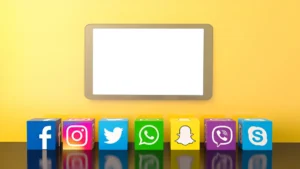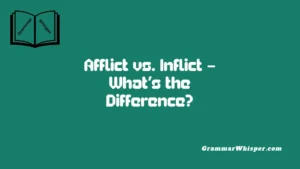The phrase “No Harm, No Foul” naturally rolls off the tongue in casual chats, especially on basketball courts, in the workplace, or during legal discussions. Its origin traces back decades but still resonates today. As a language lover, I’ve watched this saying take a rich cultural journey, rising from sports to law, ethics, and everyday life. My colleagues and I often break down its meaning and explore when it’s used accurately in fair situations or inaccurately to excuse mistakes.
This article highlights why the phrase fits so well in both informal and formal settings. On the courts, it shows minor mistakes that don’t affect the game. In the workplace and legal circles, it helps calm tense discussions and keeps meetings smooth. It stays relevant across contexts because people value simple rules: if there’s no real harm, there’s no need to call a foul. I find this mindset useful for balancing ethics, common sense, and daily choices – proof that words from sports can shape our broader life too.
What Does “No Harm, No Foul” Mean?
At its core, “No harm, no foul” means: If no damage was done, then there’s no blame to assign.
It’s often used to suggest that a mistake or violation doesn’t matter if it didn’t cause any real consequences. This idiom is rooted in informal justice, judging not just by the rules, but by the outcome.
Variations in meaning
| Context | Meaning |
| Sports | No penalty if the opposing player wasn’t hurt or disadvantaged. |
| Everyday Use | “It’s okay, don’t worry about it.” |
| Workplace | A rule was technically broken, but it didn’t cause problems. |
| Legal/Ethical | A breach occurred, but no measurable harm was caused, so no punishment is warranted. |
Nuance Matters
Not all uses are harmless. While it can defuse tension, it can also be used to minimize real harm, especially in emotional or ethical scenarios. So, intent and tone matter.
Historical Origin of the Phrase
While it feels like a modern idiom, “No harm, no foul” likely evolved in 20th-century American vernacular, especially through the basketball scene.
Key Early Appearances
- Streetball culture: Players would use it to settle disputes without referees.
- Military & industrial contexts: Occasionally documented in informal communication as a way to dismiss minor incidents.
- Everyday slang: Gained traction in U.S. urban settings before crossing over into pop culture.
The phrase is idiomatic rather than literal, meaning it functions as a fixed expression. It reflects American pragmatism: If no one got hurt, let it go.
Basketball Roots and Popularization
Where It Took Off: The Courts
Basketball, especially pickup games and streetball, was the breeding ground for this phrase. Players had to manage fairness without referees, so rules were enforced by consensus.
“No harm, no foul” became a code: If contact happened but didn’t affect the shot or play, it wasn’t called.
Why Basketball?
- High-speed, contact-based sport
- Culturally expressive (especially in urban U.S.)
- Emphasis on flow over strict rule-following
- Officiating is often subjective at amateur levels.
“You got bumped, but you scored? No harm, no foul. Keep playing.” – Common streetball philosophy.
Chick Hearn’s Influence on Popularizing the Phrase
No discussion of this idiom’s rise is complete without Chick Hearn, the legendary Los Angeles Lakers commentator.
Who Was Chick Hearn?
- Voice of the Lakers for over 40 years (1961–2002)
- Known for inventing basketball slang: “slam dunk,” “air ball,” “no harm, no foul.l”
Why His Influence Mattered
- TV & radio reach: Hearn’s broadcasts brought the phrase into American living rooms.
- Cultural bridge: He translated street-level idioms into mainstream sports commentary.
- Catchy repetition: His frequent use made it stick.
Today, sports broadcasters, fans, and even lawyers casually drop “no harm, no foul” into conversation, largely thanks to Hearn’s colorful storytelling.
Cultural Adoption Beyond Basketball
Once it left the court, the phrase took off in pop culture. Here’s where it started showing up:
Common Media References
- TV shows: The Office, Law & Order, Scrubs
- Movies: White Men Can’t Jump, Remember the Titans
- Music: Referenced in hip-hop and sports anthems
- Internet culture: Used in memes and forums to settle small disputes
Idiom Evolution
The phrase evolved from an athletic judgment to a social expression of leniency.
- Gen X: Used it often in work and play
- Millennials: Adopted it in digital discourse
- Gen Z: Sometimes critiques its dismissive tone in serious matters
Modern Everyday Usage
Here’s how “no harm, no foul” is used in real life – beyond the scoreboard.
Workplace Example
An employee misses a deadline by 30 minutes, but the client didn’t notice, and the team still delivered on time.
Boss: “It’s alright, no harm, no foul.”
Parenting Example
A kid spills water, but quickly wipes it u,p and nothing is damaged.
Parent: “It’s okay, no harm, no foul.”
Social Conflict Example
A friend forgot to reply to a message, but explains they were sick.
“I figured something came up. No harm, no foul.”
Conclusion:
The phrase “no harm, no foul” isn’t just a relic from the basketball court – it’s a reflection of how people navigate mistakes, missteps, and minor conflicts in everyday life. Rooted in fairness and outcome-based thinking, the idiom continues to be used in conversations, workplaces, legal debates, and pop culture.
However, it’s important to use the phrase thoughtfully. While it can defuse unnecessary drama, it can also be weaponized to dismiss real emotional or ethical harm. That’s where judgment comes in. The true wisdom of “no harm, no foul” lies in knowing when it applies – and when it doesn’t.
From Chick Hearn’s broadcast booth to corporate boardrooms and neighborhood basketball courts, the journey of this idiom shows just how far a few simple words can travel, especially when they hit at something universal: the desire to move forward, not dwell on damage that never occurred.
FAQS:
What is the literal and figurative meaning of “no harm, no foul”?
It means that if no injury or damage occurred, there’s no penalty or wrongdoing. Figuratively, it implies that if the result was harmless, the error can be overlooked. It downplays technical mistakes when no negative outcome follows.
Is “no harm, no foul” used in actual legal contexts?
Not formally. While lawyers and judges might say it informally to describe a harmless error, it’s not a legal principle. Courts require clear standards of liability and responsibility. Still, the phrase may come up in mediation or negotiations when parties decide not to escalate an issue.
Can this phrase be inappropriate to use in certain situations?
Yes. Using “no harm, no foul” to dismiss someone’s emotional hurt, misconduct, or ethical wrongdoing can be inappropriate and even offensive. If someone feels harmed – even if unintentionally – using this phrase can come off as minimizing their experience.
Are there other idioms similar to “no harm, no foul”?
Yes. Related expressions include:\n\n- “No blood, no foul” (a rougher sports variation)\n- “Let it slide”\n- “No big deal”\n- “No worries”\n- “It’s water under the bridge”\n\nEach carries slightly different nuance but shares the idea of moving past minor infractions.
How should I use this phrase correctly in everyday conversation?
Use it when a mistake or mishap truly didn’t cause any trouble or harm. It’s perfect for smoothing over small accidents – like a missed call, a minor scheduling error, or a bump that doesn’t cause damage. Avoid using it in emotionally sensitive situations, legal discussions, or when harm may be subjective.











